Filter by
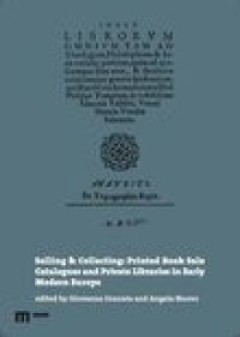
Selling & Collecting : Printed Book Sale Catalogues and Private Libraries in …
Based on the contributions given at a conference held at the University of Cagliari in September 2017, this collection of essays provides an insight into the distribution and acquisition of printed books in the sixteenth and seventeenth centuries. Publishers’ and booksellers’ catalogues are examined as evidence of the advertising and selling techniques used by agents in the book trade, with…
- Edition
- -
- ISBN/ISSN
- 9788860565723
- Collation
- 317 halaman
- Series Title
- -
- Call Number
- 025 SEL

World Literature I : Beginnings to 1650, Part One, The Ancient World
This peer-reviewed World Literature I anthology includes introductory text and images before each series of readings. Sections of the text are divided by time period in three parts: the Ancient World, Middle Ages and Renaissance, and then divided into chapters by location.
- Edition
- -
- ISBN/ISSN
- 9781940771328
- Collation
- -
- Series Title
- -
- Call Number
- 800 GET w

Towards Turkish American Literature : Narratives of Multiculturalism in Post-…
The author expands the definition of Turkish American literature beyond fiction written by Americans of Turkish descent to incorporate texts that literally ‘commute’ between two national spheres. This segment of Turkish American literature transcends established paradigms of immigrant life-writing, as it includes works by Turkish authors who do not qualify as American permanent residents an…
- Edition
- -
- ISBN/ISSN
- 9783653072297
- Collation
- -
- Series Title
- -
- Call Number
- 800 FUR t
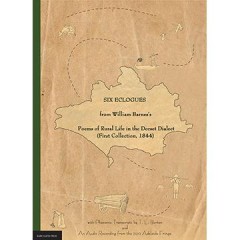
Six Eclogues from William Barnes's Poems of Rural Life in the Dorset Dialect …
When William Barnes began publishing poems in the Dorset County Chronicle in the 1830s in the dialect of his native Blackmore Vale, the first poems that appeared were in the form of eclogues — dialogues between country people on country matters. Although an immediate success, the eclogues were in time overshadowed by the many lyric poems that Barnes published in the dialect. They are now perh…
- Edition
- -
- ISBN/ISSN
- 9780987073082
- Collation
- -
- Series Title
- -
- Call Number
- 800 BUR s
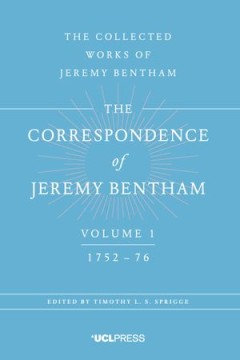
The Correspondence of Jeremy Bentham, Volume 1 : 1752 to 1776
The first five volumes of the Correspondence of Jeremy Bentham contain over 1,300 letters written both to and from Bentham over a 50-year period, beginning in 1752 (aged three) with his earliest surviving letter to his grandmother, and ending in 1797 with correspondence concerning his attempts to set up a national scheme for the provision of poor relief. Against the background of the debates on…
- Edition
- -
- ISBN/ISSN
- 9781911576037
- Collation
- -
- Series Title
- Correspondence of Jeremy Bentham 1
- Call Number
- 800 BEN c

The Correspondence of Jeremy Bentham, Volume 2 : 1777 to 1780
The first five volumes of the Correspondence of Jeremy Bentham contain over 1,300 letters written both to and from Bentham over a 50-year period, beginning in 1752 (aged three) with his earliest surviving letter to his grandmother, and ending in 1797 with correspondence concerning his attempts to set up a national scheme for the provision of poor relief. Against the background of the debates on…
- Edition
- -
- ISBN/ISSN
- 9781911576273
- Collation
- -
- Series Title
- Correspondence of Jeremy Bentham 2
- Call Number
- 800 BEN c
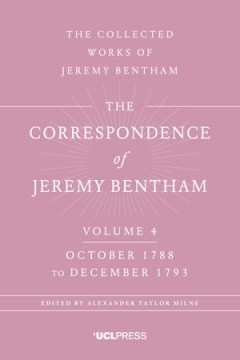
The Correspondence of Jeremy Bentham, Volume 4 : October 1788 to December 1793
The first five volumes of the Correspondence of Jeremy Bentham contain over 1,300 letters written both to and from Bentham over a 50-year period, beginning in 1752 (aged three) with his earliest surviving letter to his grandmother, and ending in 1797 with correspondence concerning his attempts to set up a national scheme for the provision of poor relief. Against the background of the debates on…
- Edition
- -
- ISBN/ISSN
- 9781911576150
- Collation
- -
- Series Title
- Correspondence of Jeremy Bentham 4
- Call Number
- 800 BEN c
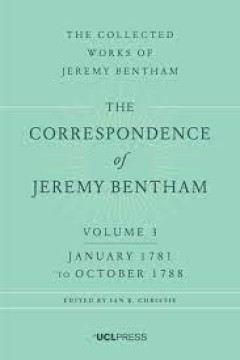
The Correspondence of Jeremy Bentham, Volume 3 : January 1781 to October 1788
The first five volumes of the Correspondence of Jeremy Bentham contain over 1,300 letters written both to and from Bentham over a 50-year period, beginning in 1752 (aged three) with his earliest surviving letter to his grandmother, and ending in 1797 with correspondence concerning his attempts to set up a national scheme for the provision of poor relief. Against the background of the debates on…
- Edition
- -
- ISBN/ISSN
- 9781911576099
- Collation
- -
- Series Title
- -
- Call Number
- 800 BEN c

Beowulf : A Translation
Many modern Beowulf translations, while excellent in their own ways, suffer from what Kathleen Biddick might call “melancholy” for an oral and aural way of poetic making. By and large, they tend to preserve certain familiar features of Anglo-Saxon verse as it has been constructed by editors, philologists, and translators: the emphasis on caesura and alliteration, with diction and syntax smo…
- Edition
- -
- ISBN/ISSN
- 9780615612652
- Collation
- -
- Series Title
- -
- Call Number
- 800 MEY b
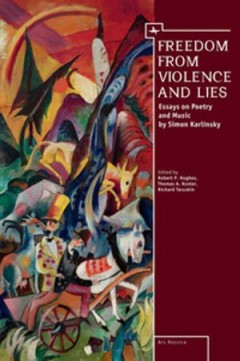
Freedom from Violence and Lies : Essays on Russian Poetry and Music
Freedom from Violence and Lies is a collection of forty-one essays by Simon Karlinsky (1924–2009), a prolific and controversial scholar of modern Russian literature, sexual politics, and music who taught in the University of California, Berkeley’s Department of Slavic Languages and Literatures from 1964 to 1991. Among Karlinsky’s full-length works are major studies of Marina Tsvetaeva and…
- Edition
- -
- ISBN/ISSN
- 9781618111586
- Collation
- -
- Series Title
- -
- Call Number
- 800 KAR f
 Computer Science, Information & General Works
Computer Science, Information & General Works  Philosophy & Psychology
Philosophy & Psychology  Religion
Religion  Social Sciences
Social Sciences  Language
Language  Pure Science
Pure Science  Applied Sciences
Applied Sciences  Art & Recreation
Art & Recreation  Literature
Literature  History & Geography
History & Geography